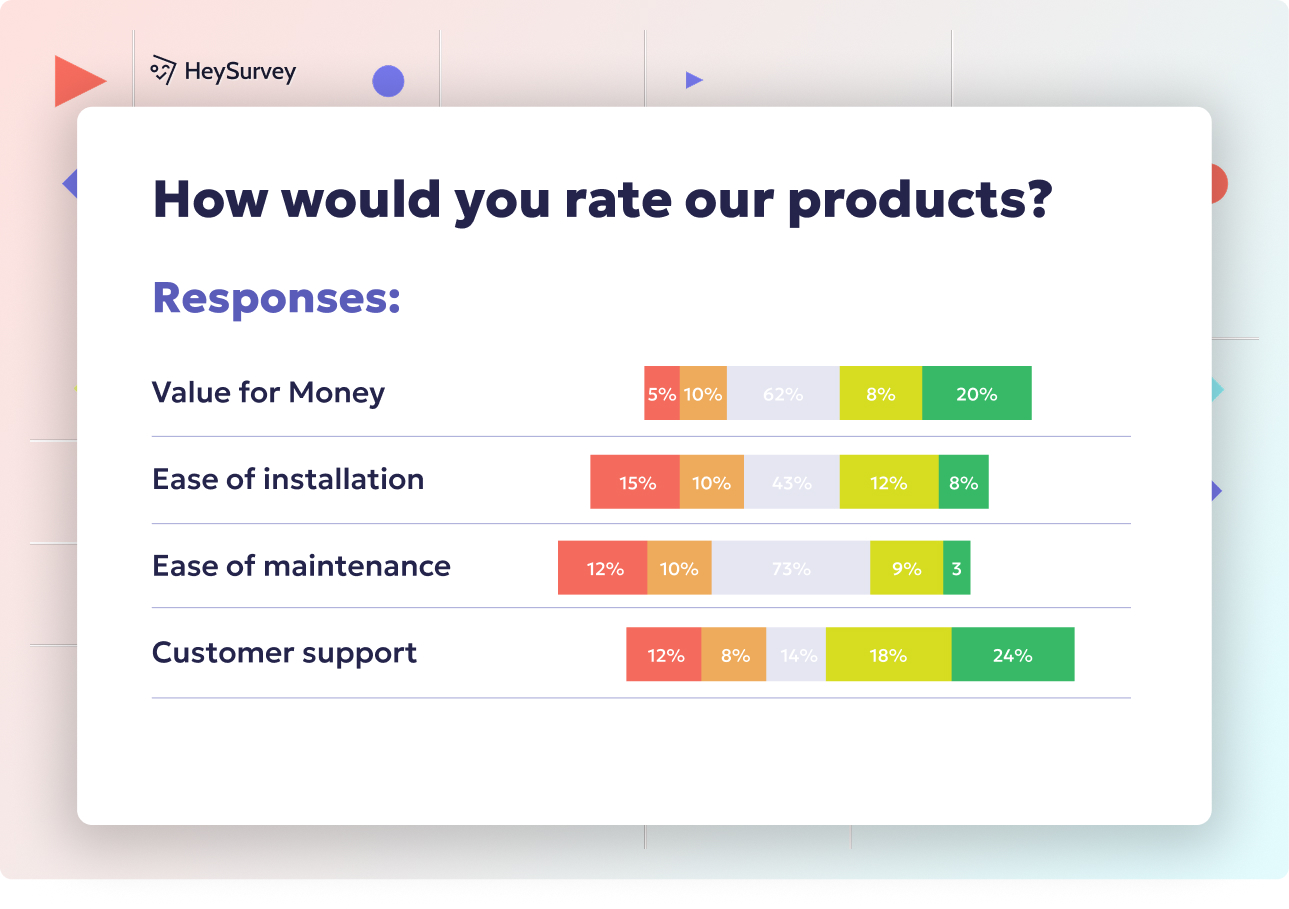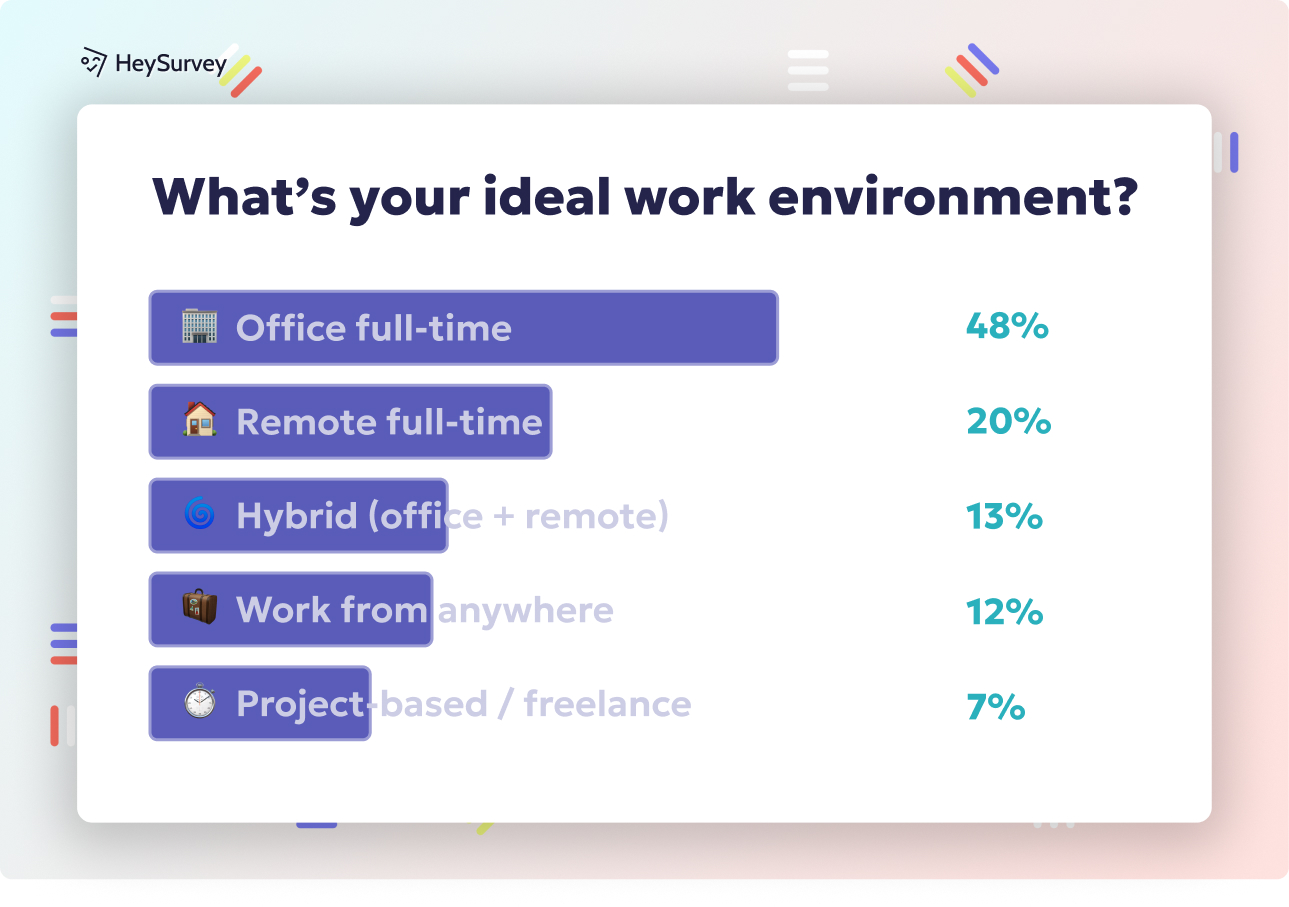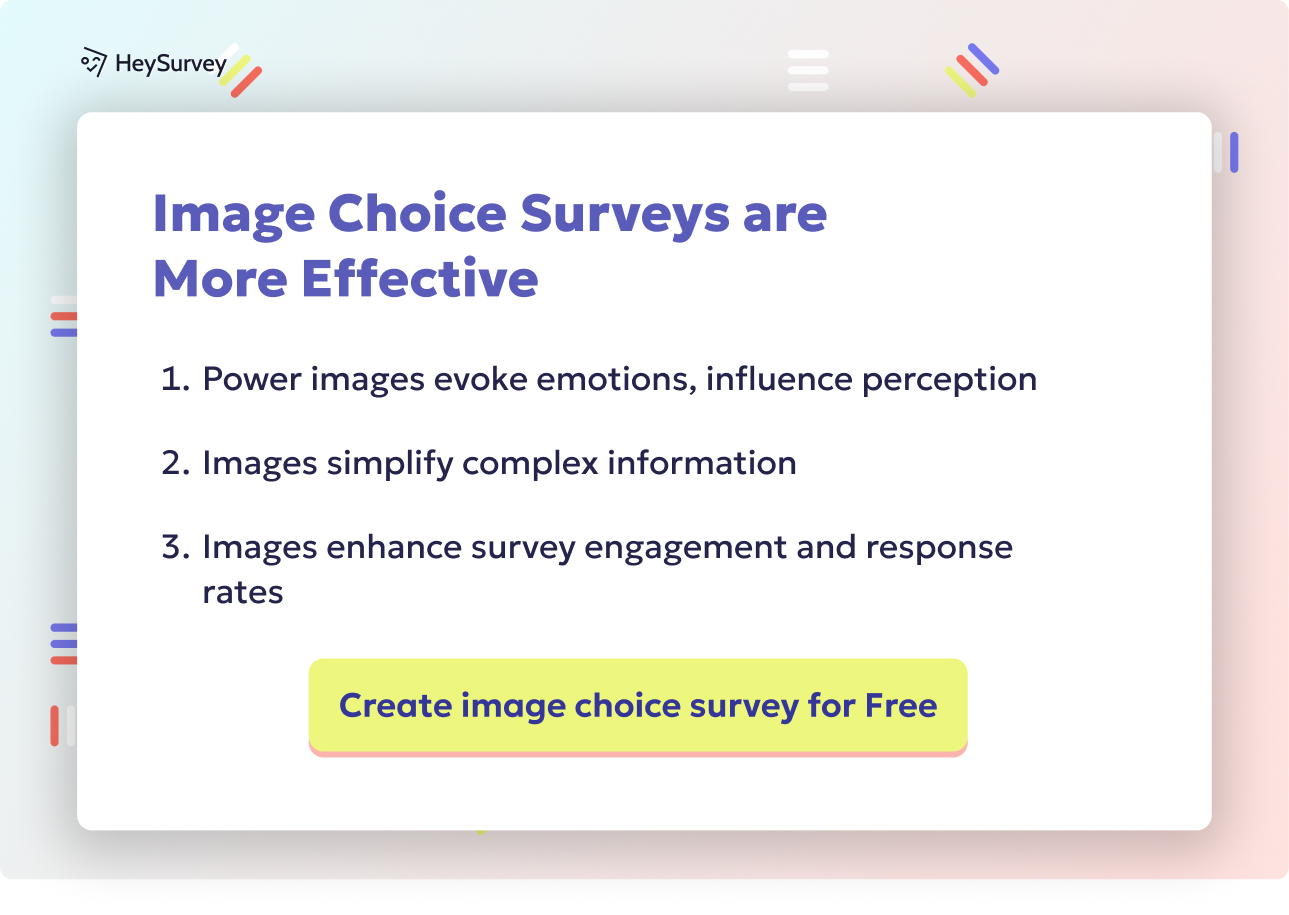29 Class Survey Questions: Proven Templates for Every Stage
Discover 40+ proven class survey questions with detailed templates for every course stage to boost student feedback and improve teaching outcomes.
Classroom surveys are the teacher’s secret weapon for understanding student needs, boosting engagement, and making evidence-based pivots. Far beyond just “course evaluations,” well-timed surveys shape a positive classroom climate, drive real teaching improvement, and help every student’s voice get heard. Whether you’re measuring student feedback before the first class, checking in mid-semester, or fine-tuning your course materials, using the right question templates at each stage of the term is key. Below, you’ll find eight smart survey types guaranteed to support your course from start to finish—plus best practices to maximize the results.
Pre-Course Expectations & Background Survey
Why and When to Use
Understanding your students’ starting point is essential for kicking off a successful term. Before you even utter “Welcome!” on the first day, a pre-course expectations survey can save you from the dreaded blank stares later. Students arrive with wildly different levels of prior knowledge, and this survey helps unveil their strengths, learning goals, and any potential roadblocks.
Use this survey before the first lesson, ideally when distributing preliminary materials. It gives you a roadmap to adjust pacing, set realistic goals, and offer support where it’s most needed. Skipping this step is like starting a road trip without checking if everyone in the car knows how to read a map—or, you know, even likes road trips.
Key benefits of this early feedback tool include: - Tailoring your teaching plan to actual student backgrounds and aspirations - Detecting readiness gaps so no one is left behind (or bored) - Identifying learning preferences for a more engaging approach
Even if your schedule is packed, taking a few minutes for this survey pays huge dividends in the weeks to come. It’s like giving yourself superpowers for course planning!
5 Sample Questions
Which of the following best describes your familiarity with this subject?
What personal goal do you hope to achieve by the end of this course?
How confident do you feel about the prerequisite skills listed in the syllabus?
What learning formats (lecture, discussion, hands-on) help you most?
Are there any foreseeable challenges (time, technology, accessibility) that might affect your learning?
Implementing pre-course surveys enables instructors to tailor course content to students' backgrounds and needs, fostering a more inclusive and effective learning environment. (poorvucenter.yale.edu)
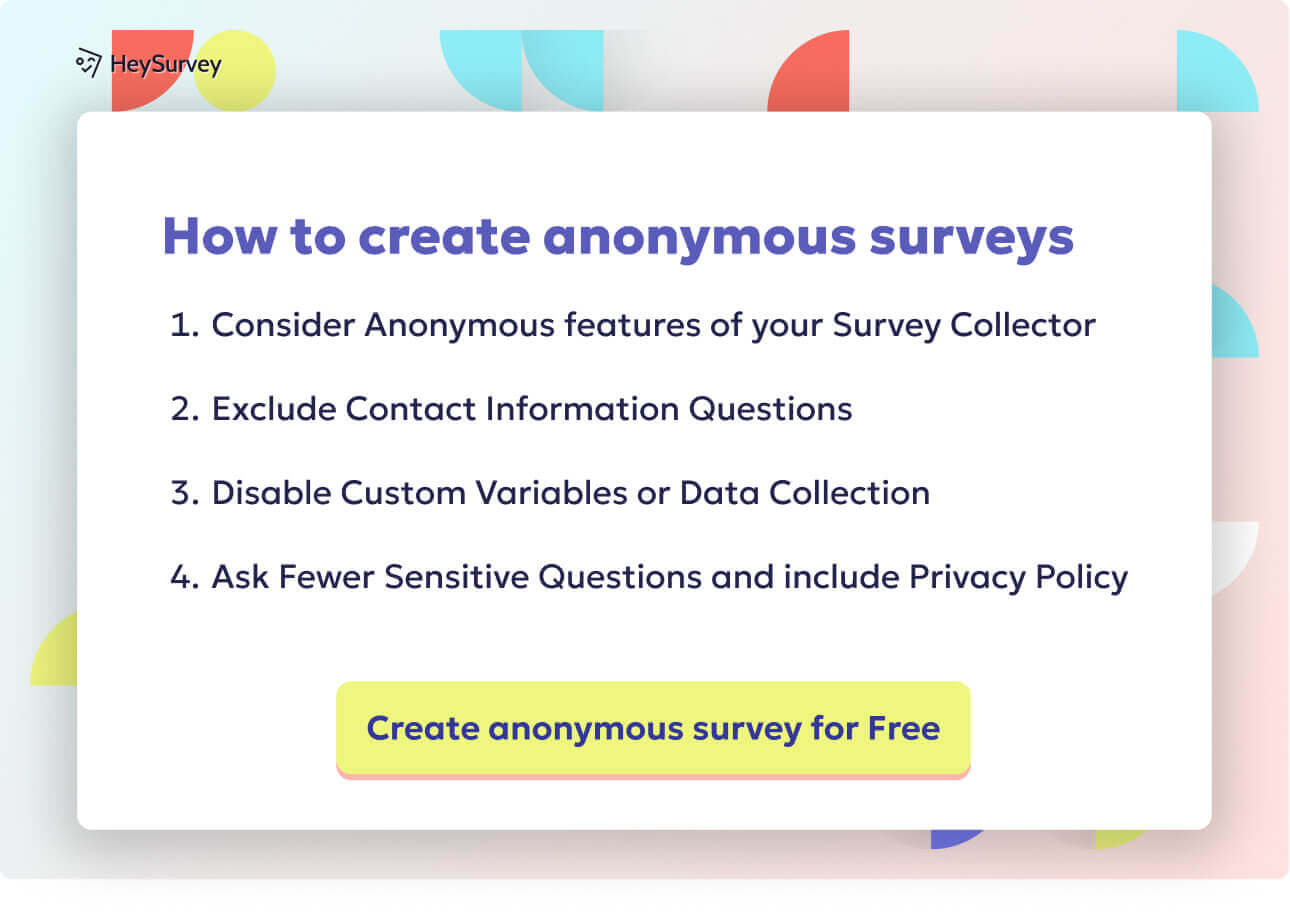
Creating a survey with HeySurvey is as easy as pie! Whether you’re new to the platform or just want a quick refresher, here’s a simple 3-step guide to get your survey rolling. Plus, we’ve added some bonus tips so you can polish your survey like a pro.
Step 1: Create a New Survey
- Head over to the HeySurvey dashboard and click “Create Survey.”
- Pick your starting point: choose an empty survey if you want full control or select a pre-built template to save some time.
- Give your survey an internal name that helps you remember its purpose (like “Mid-Term Adjustment Survey”).
Voilà! Your blank canvas is ready for the magic to happen.
Step 2: Add Questions
- Click “Add Question” in the Survey Editor to start building your survey.
- Choose question types that suit your needs: multiple-choice, text input, rating scales, and more.
- Enter your question text and customize options (for example, mark questions as required or add descriptions).
- Don’t forget to duplicate questions or add images if you want to jazz things up and speed up your work.
Mix closed-ended and open-ended questions to get both clear data and rich feedback.
Step 3: Publish Your Survey
- Hit the “Preview” button to see exactly how your survey looks on desktop and mobile devices.
- When you’re happy, click “Publish”—note that you’ll need a HeySurvey account to publish and collect responses.
- Grab the shareable survey link to send to your students or embed it in your class website.
Survey submitted! Time to sit back and watch those insights roll in.
Bonus Steps for Extra Flair and Functionality
- Apply Branding: Upload your logo and customize colors, fonts, and backgrounds via the Designer Sidebar to make the survey uniquely yours.
- Define Settings: Set start/end dates, response limits, or redirect URLs after completion in the Settings panel.
- Skip into Branches: Use branching logic to create personalized question paths based on how respondents answer, making surveys smarter and more engaging.
Ready to dive in? Click the button below to open a ready-made template and start your survey journey with HeySurvey!
Early-Term Pulse Check (Week 2–3)
Why and When to Use
First impressions matter, and the early-term pulse check is your “canary in the coal mine.” By week two or three, students have opinions—sometimes loud ones—about the course structure, difficulty, and how lost (or found) they might feel. This is the perfect time to course-correct before small problems snowball into frustrated emails or ghosting.
Deploy this pulse check shortly after your course has begun, but while there’s ample time for adjustments. Looking for red flags around unclear instructions, confusing readings, or a pace that leaves heads spinning? You’ll catch them here. Plus, asking for feedback now sends a strong message: student voices shape the class.
Here’s what makes the early-term pulse check a non-negotiable: - Quickly detecting misunderstandings or anxiety before they impact grades or morale - Inviting actionable feedback to fine-tune lessons, support, or structure - Building classroom trust by acting responsive (even if you just tweak your handouts)
This survey helps you dodge the “Wish I’d known sooner” regrets that haunt so many instructors!
5 Sample Questions
How clear are the course expectations so far?
Which topic has been most challenging during the first weeks?
Rate the pace of the class on a 1–5 scale.
What could I do right now to improve your understanding?
How comfortable do you feel asking questions in class?
Early-term student feedback enables instructors to identify and address course issues promptly, enhancing student learning and engagement. (cmu.edu)
Mid-Term Course Adjustment Survey
Why and When to Use
Think of the mid-term survey as your checkpoint before the boss level. By the semester’s midpoint, most students have formed opinions on your teaching style, the fairness of assessments, and their odds of finishing strong. Catching unfiltered feedback now lets you tweak your strategy before major tests or projects—when it actually matters!
Run this survey at the halfway mark or just before a major assessment. By now, students have enough experience to comment meaningfully on everything from grading speed to which group gigs were actually useful (and which just spawned endless memes in the class chat).
Key reasons to embrace the mid-term pulse: - Receiving detailed, actionable feedback while plenty of class time remains for improvement - Uncovering low-stakes frustrations before they spiral (it’s amazing how fast a slow assignment return can tank morale) - Showing students your commitment to their success—not just your syllabus
If you’re brave enough, share a summary of the results in class and let students see that you’re listening. Bonus: they might actually fill out your next survey, too.
5 Sample Questions
Which teaching methods have helped you learn best so far?
What one change would most improve your experience for the rest of the term?
How fair and useful have the assessments been?
Do you receive feedback quickly enough to guide improvement?
How confident are you about meeting the learning outcomes by semester’s end?
Post-Course Evaluation Survey
Why and When to Use
Congratulations—course complete! But before you ride off into the grading sunset, the post-course evaluation is your trusty reality check. This is where students get to tell you (and your department and future students) what worked, what needs to go, and just how well your course delivered on its promises.
Deploy this survey at the end of the course, either with final assessments or just after the last lesson. It’s invaluable for your own reflection and essential for program review or accreditation. Unlike random online reviews, this focused evaluation gives you clear evidence for future redesigns—and some gold-star moments to celebrate.
Why make this a tradition every term? - Compiling summative feedback you can use for meaningful course tweaks next time - Gathering data to support curriculum decisions or requests for new resources - Encouraging honest student advice for the benefit of next year's class
You’ll spot which ideas students loved, what they dreaded, and sometimes—just sometimes—get the heartfelt messages that remind you why teaching rocks.
5 Sample Questions
Rate how well the course met its stated learning outcomes.
Which assignment added the most value to your learning?
How effective was the instructor’s communication overall?
Would you recommend this course to other students? Why or why not?
What should absolutely stay the same when the course is offered again?
Early responders to online course evaluations tend to provide more positive feedback than late responders, indicating potential nonresponse biases. (journals.sagepub.com)
Student Engagement & Motivation Survey
Why and When to Use
Let’s face it: student motivation can be as mysterious as a cat’s favorite corner. A well-timed engagement survey offers important clues. Maybe halfway through your syllabus, you notice the class vibe dip or a few faces vanish. This survey sniffs out what’s sparking interest (or what’s draining it) so you know when and how to intervene.
You can use this survey whenever participation slides, before launching team projects, or if you sense an energy slump. Student engagement isn’t a nice-to-have—it predicts attendance, homework quality, even test scores. Tapping into their heads and hearts lets you adjust not just what but how you teach.
Why bother? Consider these perks: - Spotting patterns behind missed classes or lackluster discussions - Understanding what motivates students and what’s zapping their energy - Reminding students you care about their experience far beyond rote grades
Nothing sparks a turnaround like students seeing their feedback lead to TikTok-worthy lesson twists or a new game-based assignment. Channel that fresh energy!
5 Sample Questions
What keeps you most engaged during class sessions?
How often do you complete optional enrichment activities?
On a scale of 1–5, how motivated are you to master this subject?
What external factors are influencing your motivation?
Which class activities would increase your enthusiasm?
Teaching Style & Delivery Preferences Survey
Why and When to Use
If classrooms were restaurants, your “menu” of delivery options should match every learner’s appetite. A teaching style and delivery preferences survey keeps you from serving up only one “flavor” of instruction. In today’s diverse, sometimes digital classes, aligning your methods with student preferences can boost both attention and achievement.
This survey works best a few weeks in, or whenever you try a new instructional mode (think: flipping a class or going hybrid). By asking what “clicks” for students, you learn what to double down on and where to adjust—before students tune you out.
Here’s why this survey’s a must-have: - Identifying preferred formats so your lessons land with everyone (not just the extroverts) - Catching confusion early around tech tools or multimedia - Empowering students to influence daily learning—which increases buy-in
No two students learn alike, and even the most brilliant slides can’t fix a mismatch in delivery style. Let your classroom “foodies” pick the specials now and then!
5 Sample Questions
Which instructional format (lecture, group work, multimedia) helps you learn fastest?
How helpful are in-class polls and quizzes for checking your understanding?
Do you prefer receiving new content in class or as pre-class videos?
How clear are the instructor’s explanations of complex ideas?
What pacing adjustments would improve your comprehension?
Classroom Climate & Inclusivity Survey
Why and When to Use
A thriving classroom climate is more than silent nods and occasional high-fives—it’s all about trust, respect, and true inclusion. The climate and inclusivity survey acts as your radar for spotting issues that might not be obvious from the front of the room. Given today’s complex world, it’s crucial to ensure every student feels seen and safe.
Best timed after group activities, sensitive topics, or any heated discussions, this survey opens a channel for students to flag issues confidentially. Unmasking even minor issues early can prevent big headaches—and foster real belonging among all class members.
Why you won’t want to skip this feedback: - Catching subtle problems with peer respect or instructor bias before they escalate - Tracking how well your course material honors different cultures, backgrounds, or viewpoints - Showing students that diversity isn’t just a word on your syllabus—it’s a lived value
Students who feel welcomed and respected are always more likely to participate, take risks, and thrive. Sometimes, just asking is enough to spark real change!
5 Sample Questions
Do you feel comfortable voicing your opinions in this class?
How respectful are peer interactions during discussions?
Have you witnessed or experienced bias in class?
How well does the course material represent diverse perspectives?
What can be done to make the classroom more inclusive?
Course Resources & Materials Utilization Survey
Why and When to Use
Ever wondered if those hours crafting perfect slides (or picking the “best” textbook) are actually worth it? The resources and materials survey will tell you, fast. With so many tools—from learning management systems to video tutorials—knowing what students really use (or ignore) saves you time and supports their success.
Use this survey before overhauling your resource lists, updating links, or splurging on new software licenses. By pinpointing the most (and least) helpful materials, you can channel your energy, budget, and support to where it’s needed most.
Top benefits of getting this feedback: - Figuring out which resources drive learning—and which bomb silently - Identifying ease-of-access issues that might block assignments or readings - Inviting student suggestions for future tweaks or additions
When you align your resource choices with how students actually work, everybody wins—including your (often overworked) future self.
5 Sample Questions
Which resource do you consult most frequently?
Rate the clarity of the lecture slides on a 1–5 scale.
How easy is it to find assignments and readings on the LMS?
What resource has been least helpful, and why?
Which additional tools or materials would aid your learning?
Best Practices: Dos and Don’ts for Crafting Effective Class Surveys
Dos
- Keep surveys concise (10–15 questions) to maximize completion rates
- Mix closed-ended scales with a few open-ended questions
- Assure anonymity to encourage honest feedback
Don’ts
- Don’t wait until the end of the term for all feedback—act in real time
- Don’t ignore the data—share results and outline changes to close the feedback loop
While it’s tempting to craft epic questionnaires, remember: shorter is better for real insights. A few well-placed humor touches (or emojis!) can make surveys less intimidating, too. The most critical step of all? Let students see their voices make an impact. When you act on feedback, classroom trust and participation soar.
Wrapping up, classroom surveys aren’t just another administrative chore—they’re your shortcut to a more responsive, effective, and joyful teaching experience. With the right survey templates at each stage, you can spot trends, solve problems, and build community like never before. Try out these proven tools, tweak them to fit your own style, and get ready to see your teaching spark genuine learning transformations.
Related Student Survey Surveys
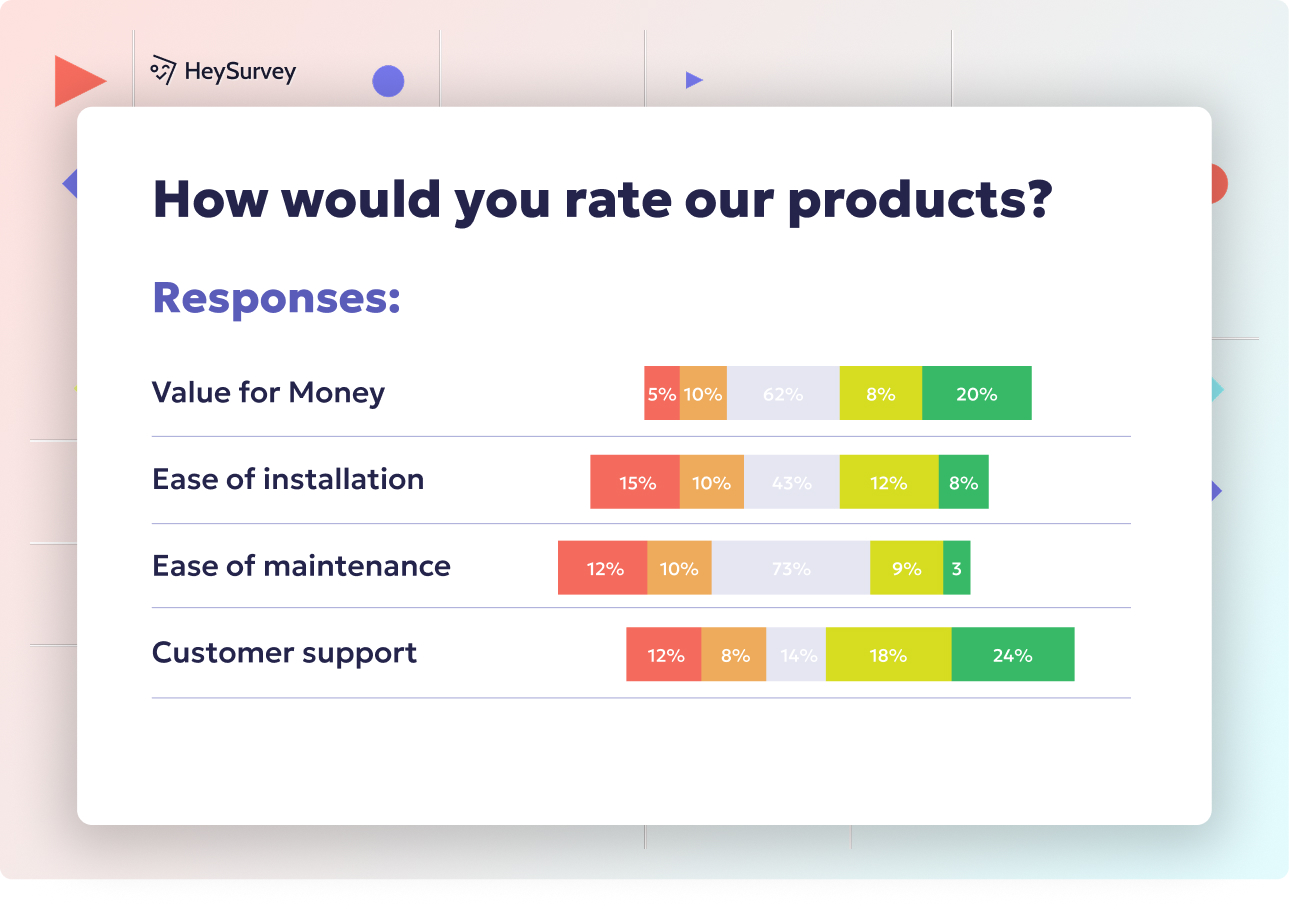
31 Survey Questions Examples for Students to Improve Learning
Discover 28 survey questions examples for students across 6 key types to boost engagement, feedba...

30 Survey Questions for Students: 6 Types & When to Use Them
Explore 6 powerful survey types with 30+ sample survey questions for students to boost engagement...
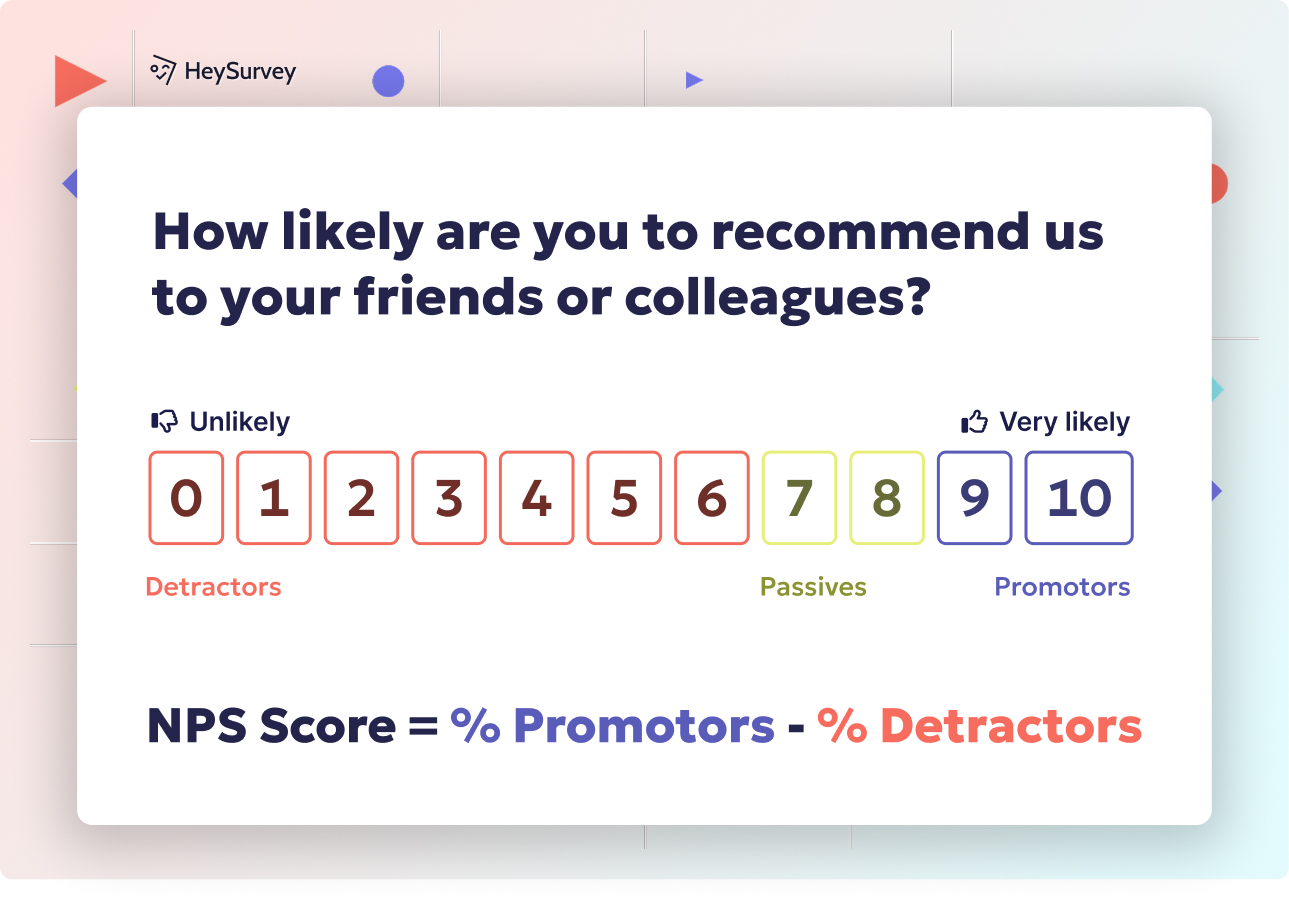
31 Essential Math Survey Questions for Students PDF Guide
Discover over 30 sample math survey questions for students PDF covering anxiety, confidence, stud...
